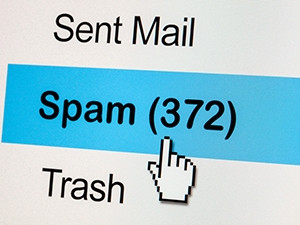
Although the percentage of spam in e-mail traffic has decreased since the second quarter of 2015, spam producers are using an increasing variety of tactics to deceive recipients and bypass e-mail filters.
This is according to Kaspersky Lab's Spam and Phishing in Q3 2015 report, which reveals the latest spam and phishing trends across the globe.
The report shows that in Q3 2015, spam accounted for 54.2% of e-mail traffic, a 0.8% drop from the previous quarter. The top three sources of spam are unveiled in the report as: the US (15.3%), Vietnam (8.4%) and China (7.2%).
A new phishing e-mail trick became popular in Q3, says Kaspersky Lab, adding that in order to bypass spam filters, the text of the e-mail and fraudulent links were placed in an attached PDF document rather than in the message body.
Kaspersky says spammers used fake notifications from booking services, airlines and hotels to spread malicious programs such as Trojan-Downloader.JS.Agent.hhy, disguised as a flight e-ticket or hotel reservation.
Another type of spam e-mail offered a selection of brides to foreign suitors, the security solutions vendor says. After replying, targets were sent further spam e-mails and some 'brides' asked for money to visit their 'suitors', it adds.
"A variety of tactics were used - from sending fake notifications on behalf of hotels, to sending fraudulent links in PDF attachments, and requests for money to lonely 'suiters'. With this variety of tactics expanding, it's vital that users protect themselves online with the latest cyber security tools," says Tatyana Shcherbakova, anti-spam analyst at Kaspersky Lab.
As in Q2, the fake HTML page Trojan-Spy.HTML.Fraud.gen once again topped the rating of malicious programs sent by e-mail, the report says, adding its e-mails lure targets by imitating an important notification from a commercial bank, airline or online store.
Kaspersky says there were some significant changes in the top three countries targeted by mailshots in Q3 2015. Germany (18.47%) remained on top, although its contribution dropped by 1.12% since Q2. The amount of malicious spam originating from Brazil almost doubled in Q3 compared to Q2, putting Brazil in second place (11.7%). Russia moved quickly up the ranks from fifth to third place (7.56%), as its share grew by 2.82%. The UK (4.56%), which was second in Q2, ended Q3 in sixth place.
In Q3 2015, the Kaspersky Lab Anti-Phishing system was triggered 36 300 537 times on the computers of Kaspersky users. This is six million times more than during the previous quarter. During the quarter, 839 672 phishing wildcards were added to Kaspersky's databases.
Share